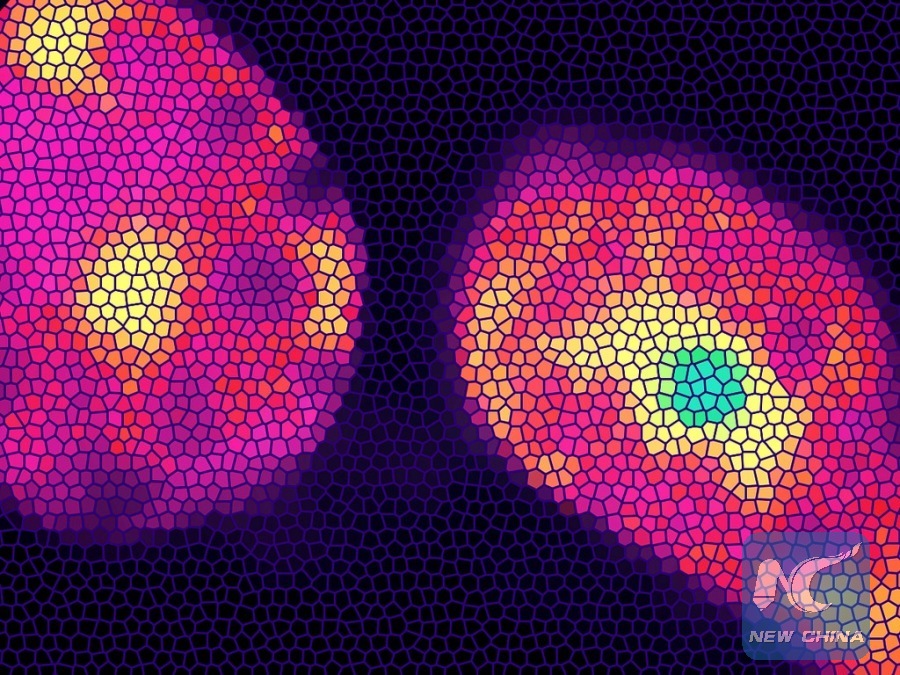
Illustration of thermogenesis in mice beige fat cells in response acetylcholine stimulation. (Credit: Stephanie King, LSI at the University of Michigan)
WASHINGTON, May 21 (Xinhua) -- American researchers have identified a key signaling pathway that spurs certain types of fat cells to burn energy, providing a possible target for obesity therapies in humans.
A study published on Monday in the journal Nature Medicine revealed that the same proteins that moderate nicotine dependence in the brain may be involved in regulating metabolism by acting directly on beige fat cells.
Beige fat cells in mice and humans are fat cells that can be activated to burn energy through a process called thermogenesis. They are unlike the white fat cells that store energy as lipids.
Researchers analyzed activated beige fat and uncovered a molecule directly linked to thermogenesis in these cells: CHRNA2 (for cholinergic receptor nicotinic alpha 2), a type of receptor that is best known for regulating nicotine dependence in brain cells.
According to the study, CHRNA2 functions in mouse and human beige fat cells, but not in energy-storing white fat cells, indicating that this protein plays a role in energy metabolism.
This doesn't mean that smoking is good for you, cautioned Wu Jun, assistant professor at Life Sciences Institute of University of Michigan, but the findings may help further explain some of the weight gain that is associated with smoking cessation.
Previous research has shown that nicotine can suppress appetite. But by identifying how nicotine affects metabolism directly, this new study may open the door to more novel approaches to combating the weight gain that often occurs when individuals stop smoking.
In research conducted in human and mouse cells and in genetically modified mice, Wu and her colleagues determined that CHRNA2 receptor proteins can be activated both by nicotine and by acetylcholine molecules produced by nearby immune cells.
When the CHRNA2 protein receives the acetylcholine or nicotine, it stimulates the beige fat cells to start burning energy.
"It is really cool to discover a selective pathway for beige fat, a new cell type--and even more exciting that this is conserved in humans," said Wu, the study's senior author.
To further test the role of CHRNA2 in metabolism, the researchers analyzed mice that lacked the gene needed to make this protein.
Mice without the CHRNA2 gene showed no differences from the control group when they were fed a regular diet. But when they were switched to a high-fat diet, the mice lacking the gene exhibited greater weight gain, higher body fat content and higher levels of blood glucose and insulin, indicators of diabetes.

